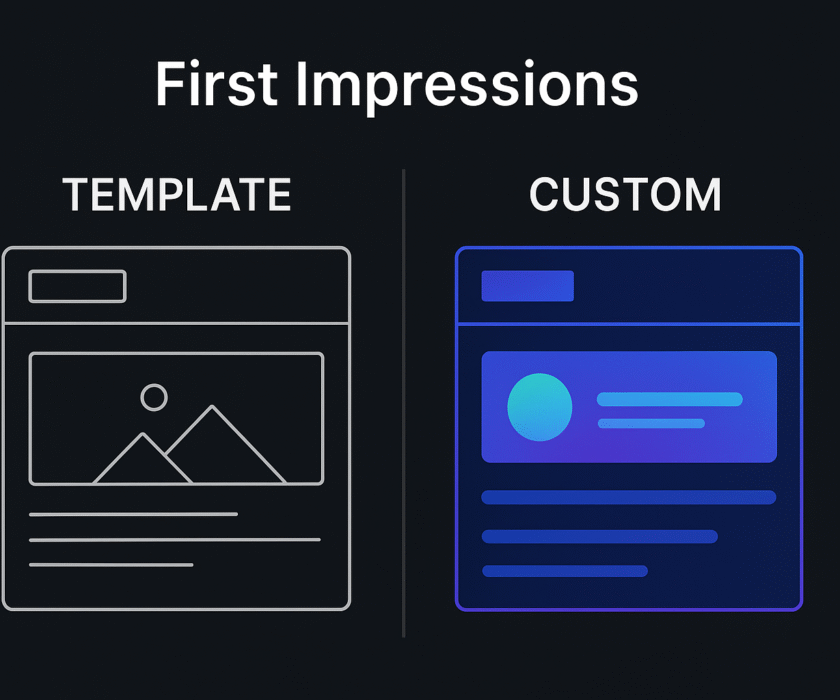Security by Design for Custom Web and Apps
Introduction, make security the fast path
Security by design for custom apps is how you ship quickly and avoid breaches. Instead of treating security as a bolt-on afterthought, you embed it into product strategy, architecture, and delivery. That keeps velocity high, audit findings low, and customer trust intact.
If you’re still weighing custom builds, start with the first article in this series: The Importance of Custom Web and App Development for Modern Businesses — it explains why templates cap growth while custom aligns technology to strategy.
Governance that scales: SSDF + ASVS (security by design for custom apps)
Security programs fail when everyone argues about what good looks like. Solve that with two proven anchors:
- NIST SSDF (SP 800-218) — the what: policy-level practices that fit any SDLC, from requirements to release.
- OWASP ASVS — the how to verify: a control catalog (L1–L3) you can turn into acceptance criteria, CI checks, and pen-test scope.
Use SSDF to set expectations and ASVS to score reality. Publish both on your engineering handbook so product, security, and suppliers share a common language. <!– Image placeholder to satisfy plugin’s “images + keyphrase in alt” –>
<img src=”/wp-content/uploads/security-sdlc-overlay.svg” alt=”Security by design for custom apps across SDLC using NIST SSDF and OWASP ASVS” width=”1200″ height=”300″ loading=”lazy” decoding=”async” />
Design before code: threat modeling that fits sprint cadence
Most security failures are design failures. Before building a feature or service:
- Map assets and trust boundaries. What is sensitive? Where does data cross a line?
- List abuse cases. Think like an attacker (e.g., account takeover, Insecure Direct Object Reference).
- Select mitigations. Tie each abuse case to an ASVS control and a test.
- Capture it on one page. Owners, risks by impact × likelihood, and residual risk.
Run a 30-minute STRIDE workshop at refinement or sprint zero. The goal isn’t a slide deck — it’s clarity that engineers can implement immediately.
CI/CD as a paved road: verification that never leaves Git
Security only sticks if it rides the same rails as delivery. Minimum viable pipeline:
- Pre-merge gates: SAST + linters, secret scanning, dependency scan with SBOM, and policy thresholds that block merges.
- Build integrity: signed commits, protected branches, reproducible builds, and artifact signing.
- Automated checks mapped to ASVS: auth/session, crypto config, headers, input validation, and access control tests.
- Release policy: no deploy if security jobs fail; hotfix exceptions require sign-off with a follow-up ticket.
Result: the secure path is the fastest path, not a parallel process that slows teams down.
Where web apps get hurt (and how you avoid it)
The modern top risks aren’t just injections — they’re Broken Access Control, cryptographic failures, and insecure design. Make these defaults:
- Server-side authorization everywhere. Deny by default. Test for IDOR and path traversal.
- Modern crypto. TLS everywhere, proven libraries, key rotation, and no home-grown algorithms.
- Secure headers & CSRF defenses. Strong CSP, HSTS, and SameSite cookies; never trust client-side checks.
- Production-like testing. DAST against staging with live configs (minus secrets).
Document which ASVS items each control satisfies. That’s how you turn “we fixed it” into “we verify it on every build.”
API first = API exposed (API security by design for custom apps)
If your platform is API-first, that’s where attackers will aim. The OWASP API risks (BOLA, broken auth, excessive data exposure, resource abuse) are operational realities.
Practical guardrails
- AuthN/AuthZ: short-lived tokens, token introspection, and per-resource authorization (not just per-endpoint).
- Input enforcement at the edge: schema validation that rejects unknown fields.
- Rate and cost limits: protect uptime and your cloud bill.
- Observability: log subject, action, resource, decision; baseline anomalies.
Tie these to ASVS/API controls and write automated tests so they can’t regress. <!– Image placeholder to satisfy plugin’s “images + keyphrase in alt” –>
<img src=”/wp-content/uploads/api-security-flow.svg” alt=”Security by design for custom apps: API gateway, OAuth, per-resource authorization and protected data store” width=”1200″ height=”320″ loading=”lazy” decoding=”async” />
Data protection is business protection
Treat sensitive data like a liability you choose to carry:
- Minimize and retain wisely. Don’t collect what you can’t protect; set and enforce retention windows.
- Classify and route. Tag PII/PCI/PHI; isolate workloads; restrict who can run queries.
- Encrypt everywhere. In transit and at rest; manage keys outside app code; rotate secrets.
- Audit trails you can trust. Immutable logs, tamper-evident storage, and alerts on anomalous access.
These map cleanly to SSDF’s “Protect” practices and ASVS verification items.
7) Continuous assurance: test more than once a year
Security is not a single pen test:
- Unit/integration security tests (negative tests for auth and access control).
- DAST & smoke tests on staging; catch header/redirect misconfigurations.
- IaC scanning for cloud posture (network boundaries, encryption, secret exposure).
- Pen-testing cadence before GA and after material architecture change focused on business logic.
- Exercises (tabletop or red/blue) derived from your threat model; measure detection and response time.
Publish a coverage chart: % of ASVS controls verified per release and % builds passing security gates.
People and process: clarity beats heroics
Security succeeds when roles are explicit:
- The product owns risk acceptance.
- Engineering owns implementation and tests.
- Security sets policy and verifies.
Add “security by design for custom apps” to the Definition of Done: feature merges when ASVS checks pass, secrets scan is clean, and an abuse-case test exists. For suppliers, express requirements in SSDF terms and buy only what meets them.
A 90-day rollout you can actually do
Days 0–15 — Baseline
Adopt SSDF as policy; choose ASVS level per system (L1 public, L2 authenticated, L3 high risk); enable SAST, dependency + SBOM, and secret scanning as merge gates.
Days 16–45 — Design & API hardening
Introduce threat modeling at refinement; implement schema validation, BOLA tests, and rate/quota limits; begin authZ tests per resource.
Days 46–90 — Verification & culture
Map CI checks to ASVS items; add DAST and IaC scanning; run a focused pen test on business-logic risks; do a tabletop incident drill and fix alerting gaps.
Reporting to leadership (in business terms)
Boards don’t want jargon — they want risk, assurance, and impact:
- Top 5 risks with mitigation status and owners.
- Assurance coverage: ASVS controls verified per release; builds passing security gates.
- API health: auth failures, rate-limit hits, anomalous access patterns.
- Delivery impact: median time-to-merge and release frequency (proof security didn’t stall shipping).
- Incidents: mean time to detect/respond and lessons learned.
Conclusion fast, compliant, and defensible
Adopting security by design for custom apps lets you scale product velocity without scaling risk. Use SSDF to define the program, ASVS to verify it, threat modeling to cut design mistakes, and API guardrails to keep the core of your platform safe. That’s how custom development stays differentiated and defensible.

